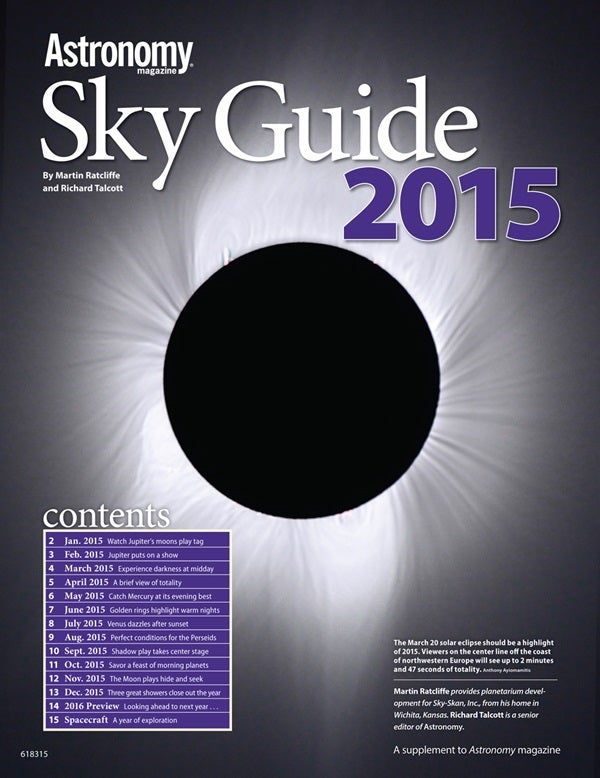The two lunar eclipses offer easier access. On April 4, observers can witness totality from a clear location anywhere from central North America westward across the Pacific to eastern Asia. The Moon dips into Earth’s dark umbral shadow for only 4 minutes and 43 seconds, however, which makes this the 21st century’s shortest total lunar eclipse. In fact, this is the briefest duration of totality since October 17, 1529. The night of September 27/28, 2015, brings a heartier 72 minutes of totality to viewers across North and South America, Europe, and Asia.
Planet-watchers also have a lot to look forward to in 2015. Venus dominates the evening sky until early August and then reigns before dawn from late August through year’s end. Jupiter, which reaches opposition in early February, plays a worthy second fiddle — never as bright as Venus but always brighter than any star. These two brilliant worlds have a pair of stunning conjunctions in 2015 — in the evening sky July 1 and before dawn October 26.
The latter conjunction takes place just 4° from Mars. Although the Red Planet doesn’t reach opposition in 2015, its ruddy glow enhances the conjunction scene. That leaves lovely Saturn, which reaches peak visibility opposite the Sun on May 22. It then lies in eastern Libra just north of the familiar shape of Scorpius the Scorpion.
After a decent 2014, meteor observers can rejoice at what 2015 will offer. The two best annual meteor showers — August’s Perseids and December’s Geminids — both peak around New Moon. With our satellite out of the picture, viewers at dark sites can expect to see an average of more than one meteor per minute.










